Rodents: Classification, Habitats, and Their Role in Ecosystems
Rodents, belonging to the order Rodentia, are one of the most widespread and diverse groups of mammals. They account for an incredible 40% of all mammal species, with over 2,000 known species found across almost every habitat on Earth. From bustling urban centers to the dense canopy of rainforests, rodents have adapted to thrive in varied environments, showcasing remarkable diversity and resilience.
Their significance goes beyond numbers. Rodents play a pivotal role in maintaining ecological balance, acting as seed dispersers, prey for predators, and even contributors to scientific research. They are deeply intertwined with human culture, both as companions like guinea pigs and hamsters, and as species that challenge agricultural systems. Understanding rodents provides insights into both ecosystems and human interactions with nature.
Physical Characteristics
Rodents display a wide range of physical traits, yet certain characteristics are shared across the group. Their size varies dramatically, from the tiny pygmy mouse, which weighs just a few grams, to the massive capybara, the largest rodent, tipping the scales at over 70 kilograms. Despite this diversity, they share several defining features.
One of their most distinctive traits is their continuously growing incisors. These specialized teeth, found in both the upper and lower jaws, enable rodents to gnaw efficiently, a skill essential for accessing food and building shelters. Unlike other mammals, rodents lack canine teeth. Instead, they have a noticeable gap, known as a diastema, between their incisors and molars, which allows them to manipulate food effectively.
Rodent tails are another feature that varies widely among species. Squirrels, for example, have long bushy tails that aid in balance, while guinea pigs lack a prominent tail altogether. Their fur also shows significant variation, ranging from the soft, plush coat of chinchillas to the spiny, protective quills of porcupines.
| Feature | Details |
|---|---|
| Size | Ranges from a few grams to over 70 kg |
| Teeth | Continuously growing incisors, no canines |
| Tail | Varies: long, bushy, short, or absent |
| Fur | Soft, coarse, or spiny depending on species |
These adaptations have helped rodents survive and thrive in diverse habitats, making them one of the most successful mammalian groups.
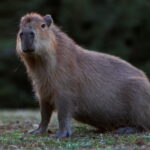
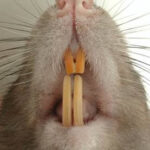
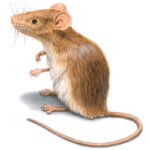
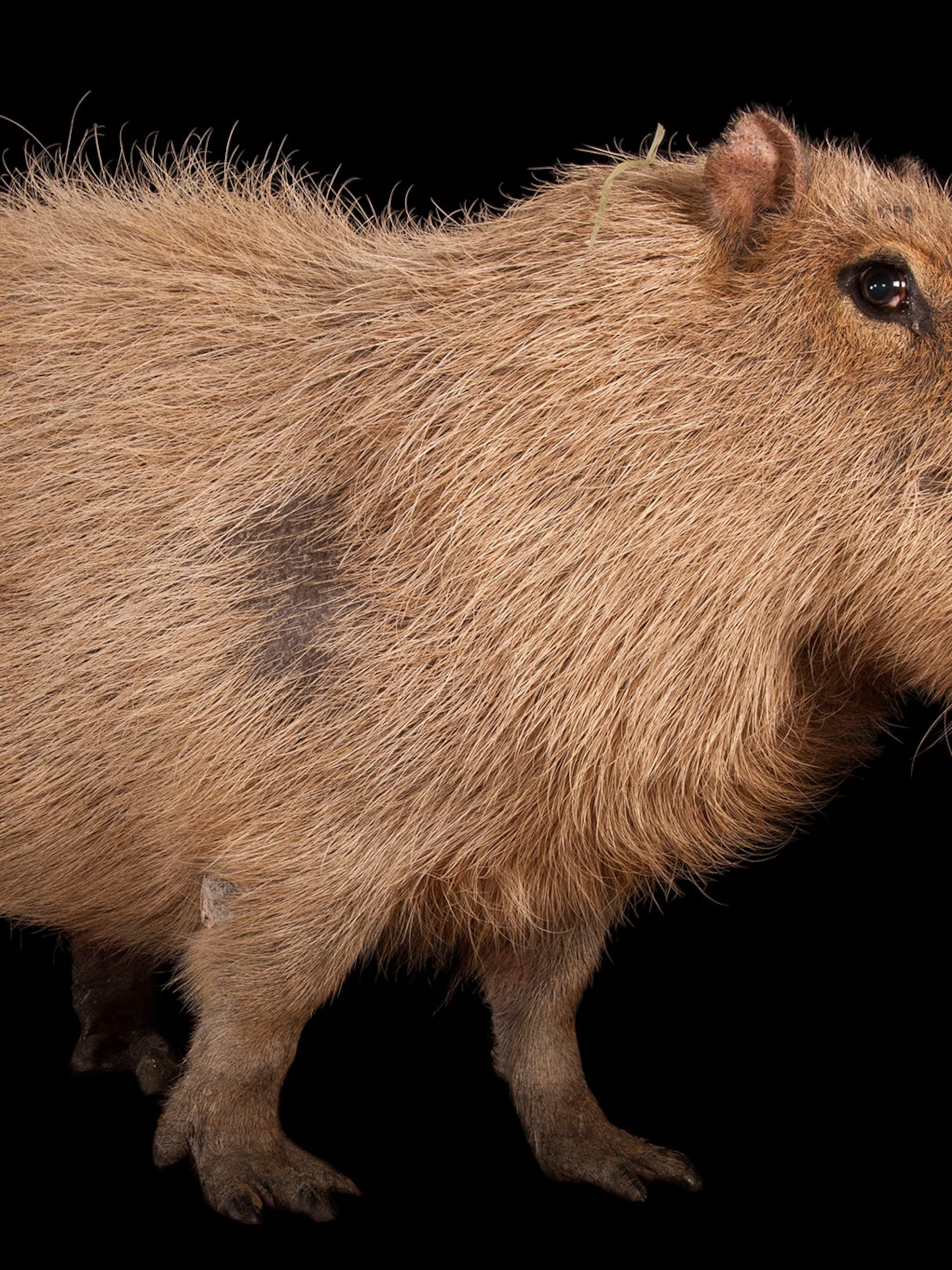
Classification and Diversity
Rodents, belonging to the order Rodentia, are incredibly diverse and include a wide variety of species classified into several suborders and families. These classifications highlight the adaptability and unique traits of different rodent groups across the globe.
Notable Lower Classifications
Here is a breakdown of key rodent classifications:
- Capybara: The largest rodent in the world, native to South America.
- Chinchilla: Known for their soft, dense fur.
- Hamster: Popular as pets, often nocturnal.
- Rat: Found worldwide, adaptable to urban and rural settings.
- Guinea Pig: Domesticated for companionship and cultural use.
- Squirrel: Arboreal rodents with bushy tails, found in forests and urban parks.
- Beaver: Aquatic rodents renowned for dam-building.
- Muskrat: Semi-aquatic, often found in wetlands.
- Nutria: Also called coypu, invasive in many regions.
- Agouti: Tropical rodents found in Central and South America.
- Murids: Includes mice, rats, and gerbils, making up a large portion of rodents.
Specialized Rodent Groups
- Mongolian Gerbil: Small desert rodents often kept as pets.
- Naked Mole-Rat: Subterranean rodents known for their eusocial behavior.
- Tuco-tuco: Burrowing rodents found in South America.
- Dormouse: Small, arboreal rodents with a long hibernation period.
- Josephoartigasia monesi: Extinct, giant rodent species.
- Kangaroo Rat: Adapted to desert habitats with unique water-conservation abilities.
- Old World and New World Porcupines: Distinguished by their quills for defense.
Broader Families and Subgroups
- Hystricomorpha: Includes porcupines, guinea pigs, and capybaras.
- Chinchillidae: A family that includes chinchillas and viscachas.
- Muroids: A vast group comprising mice, rats, and their relatives.
- Octodontidae: South American rodents like the degu.
- Arvicolinae: Includes voles and lemmings.
| Group | Examples |
|---|---|
| Aquatic Rodents | Capybara, beavers, nutria, muskrat |
| Desert Specialists | Kangaroo rat, Mongolian gerbil |
| Arboreal Rodents | Squirrel, dormouse, flying mouse |
| Burrowing Rodents | Gopher, naked mole-rat, tuco-tuco |
| Large Rodents | Capybara, Josephoartigasia monesi (extinct) |
This classification demonstrates the remarkable variety within the rodent family, ranging from tiny gerbils to massive capybaras, each playing a unique role in their ecosystems.
Habitat and Distribution
Rodents are among the most adaptable animals, inhabiting nearly every part of the world. They are found on all continents except Antarctica, where extreme conditions make survival impossible. They are also absent from New Zealand and a few remote oceanic islands. Beyond these exceptions, rodents thrive in a wide variety of habitats, showcasing their ability to adjust to diverse environments.
Their habitats range from dense forests, where species like flying squirrels spend their lives in the canopy, to arid deserts, where kangaroo rats have evolved to survive with minimal water. Wetlands, grasslands, and even urban areas are also home to many rodent species. Beavers are excellent examples of rodents that shape their habitat, creating ponds and waterways with their dam-building activities.
Rodent diversity also varies geographically. In South America, capybaras dominate the waterways and wetlands, while Africa is known for its gerbils and mole rats adapted to dry climates. In Asia, bamboo rats are common in dense forest regions, while Australia hosts introduced species like house mice and black rats. This wide distribution underscores their ability to survive in nearly any ecosystem.
Diet and Feeding Habits
Rodents have a versatile diet that has contributed to their success across various habitats. Most rodents are omnivorous, consuming a mix of seeds, fruits, nuts, grains, and vegetation. Small rodents like mice and hamsters are known for hoarding seeds and grains, while larger species such as squirrels also rely heavily on nuts.
Some species have highly specialized diets. Beavers primarily eat bark and wood, which their strong teeth are perfectly adapted to handle. Capybaras, on the other hand, graze on aquatic plants, similar to how cattle feed on grass. Their digestive systems are equipped to extract nutrients from plant materials, thanks to a specialized structure called the caecum, which houses bacteria that break down cellulose into digestible forms.
This dietary flexibility has also allowed rodents to thrive in human environments. Urban rodents like rats and mice often scavenge food waste, making them highly adaptable to city life. Such varied diets ensure that rodents can survive in almost any ecosystem, from forests to deserts to urban areas.
| Diet Type | Examples |
|---|---|
| General Omnivores | Mice, hamsters, squirrels |
| Bark and Wood Feeders | Beavers |
| Aquatic Plant Grazers | Capybaras |
| Urban Scavengers | Rats, house mice |
Behavior and Social Traits
Rodent behavior varies greatly among species, influenced by their environment and social structures. Many rodents are nocturnal, staying active at night to avoid predators. This behavior is common in small species like mice and rats. Others, like squirrels, are diurnal, being active during the day to forage for food.
Social structures among rodents range from solitary lifestyles to complex social systems. Prairie dogs, for instance, are highly social rodents that live in large colonies called “towns.” These communities are well-organized, with individual prairie dogs assigned specific roles like guarding and foraging. In contrast, beavers are more solitary but live in family units, working together to build lodges and dams.
Communication is another fascinating aspect of rodent behavior. Rodents use a mix of vocalizations and body language to convey information. Mice and rats emit high-pitched chirps that are often inaudible to humans, while prairie dogs produce a range of sounds to alert their group of predators. Some rodents, like beavers, rely on scent marking to establish territory and communicate with others.
Rodents also display unique behaviors suited to their environments. For instance, kangaroo rats have developed hopping as a primary mode of movement, allowing them to escape predators quickly. Flying squirrels use their gliding abilities to move between trees, avoiding ground-based threats.
Sounds and Communication
Rodents employ a variety of methods to communicate, ranging from vocalizations to non-vocal signals. Their vocal range includes squeaks, grunts, barks, and even honks, depending on the species. Mice, for example, are known for their ultrasonic sounds, which are beyond human hearing and are often used during courtship or to communicate with their offspring. Prairie dogs are another example, producing distinct alarm calls that can convey the type and location of predators.
Non-vocal communication is equally important in rodent behavior. Tail movements and thumping are commonly observed in species like kangaroo rats, which use rhythmic foot-thumping to warn of nearby threats. Scent marking is another widespread form of communication, used to establish territory, indicate social status, or signal reproductive readiness. Beavers, for instance, secrete scents from specialized glands to mark their territory and deter intruders.
These diverse communication methods highlight the adaptability of rodents in various environments, ensuring they can thrive and interact effectively within their social and ecological contexts.
Lifespan and Reproduction
The lifespan of rodents varies significantly depending on their size and species. Smaller rodents, such as mice and hamsters, typically live only 2 to 3 years, while larger species like beavers and capybaras can survive for 8 to 10 years or more under favorable conditions. This variation in lifespan reflects their differing ecological roles and vulnerability to predation.
Reproduction in rodents is characterized by high rates to compensate for heavy predation. Many species are prolific breeders, capable of producing large litters multiple times a year. For instance, a single female mouse can give birth to over 50 offspring annually. Gestation periods also vary, with smaller rodents having shorter durations, while larger species may have longer ones.
Some rodents exhibit unique reproductive traits, such as embryonic diapause, where the development of embryos is temporarily paused until environmental conditions are favorable. This strategy is particularly useful in harsh environments, allowing species to maximize their survival potential.
| Rodent Type | Lifespan | Reproductive Traits |
|---|---|---|
| Small Rodents | 2-3 years | Large litters, short gestation |
| Large Rodents | 8-10+ years | Fewer litters, longer gestation |
| Unique Adaptations | Varies | Embryonic diapause in some species |
Ecological and Economic Importance
Rodents play a crucial role in ecosystems, contributing significantly to ecological balance. As seed dispersers, they help in forest regeneration and maintaining plant diversity. Their burrowing activities aerate the soil, improving its health and nutrient distribution. Furthermore, they are a key food source for predators, including wolves, birds of prey, and even humans in some cultures.
Economically, rodents have a dual impact. On one hand, they are considered pests in agricultural settings, causing extensive damage to crops and stored food. Rats and mice, for example, are notorious for their role in contaminating food supplies. On the other hand, certain rodents, such as guinea pigs and mice, have been instrumental in scientific research and medical advancements, helping researchers understand diseases and develop treatments.
While their economic impact may vary depending on the context, their ecological contributions are indispensable, underscoring their importance in natural systems.
Social and Cultural Significance
Rodents have long been a part of human culture, appearing in folklore, mythology, and even as pets. In Asian cultures, rats are symbols of prosperity and cleverness, as seen in the Chinese zodiac. In European traditions, both rats and mice have been portrayed as cunning and sometimes mischievous creatures. South American cultures revere capybaras for their gentle nature and their role in ecosystems.
As pets, rodents have gained popularity for their manageable size and relatively easy care. Hamsters, guinea pigs, and fancy rats are widely kept as companions, appreciated for their playful and affectionate behaviors. Despite their positive roles, rodents also carry a negative reputation in some contexts. Rats, for instance, have been associated with the spread of diseases like the plague, leading to superstitions and fear in many societies.
These contrasting perceptions highlight the complex relationship humans have with rodents, ranging from reverence to aversion, depending on cultural and historical factors.
Conservation and Threats
Rodents face numerous challenges in the modern world, many of which stem from human activities. Habitat destruction due to urbanization and deforestation poses a significant threat to their survival. Species like the chinchilla, once abundant in the wild, have been overhunted for their luxurious fur, pushing them to the brink of extinction. Additionally, invasive species introduced by humans often disrupt local ecosystems, outcompeting native rodents for resources and altering natural habitats.
Efforts to protect rodents and their ecosystems are gaining momentum. Certain species, like capybaras and beavers, are now protected by law in many countries to prevent overexploitation. Breeding programs and conservation initiatives have been established to save endangered rodents, focusing on restoring their populations and natural habitats. Managing invasive species has also become a priority, as it helps to balance ecosystems and safeguard native wildlife.
| Threats | Examples |
|---|---|
| Habitat Destruction | Urbanization, deforestation |
| Overhunting | Chinchillas for fur trade |
| Invasive Species | Competition with native rodents |
Fun Facts About Rodents
Rodents are full of surprises, with unique traits and behaviors that set them apart. For example, the capybara holds the title of the world’s largest rodent and is an excellent swimmer, often seen lounging in water to stay cool. On the other end of the spectrum, mice can squeeze through holes as small as a pencil, thanks to their flexible bodies.
Beavers have earned the nickname “nature’s engineers” for their incredible dam-building abilities, which create habitats for countless other species. And did you know that rats can laugh? When tickled, they emit ultrasonic sounds associated with pleasure, revealing their playful and social nature.
| Fun Fact | Details |
|---|---|
| Capybara | Largest rodent, loves swimming |
| Mice | Fits through pencil-sized holes |
| Beavers | Builds dams, alters ecosystems |
| Rats | Can laugh when tickled |
Rodents and Humans
The relationship between rodents and humans is complex, ranging from mutual benefits to conflict. Rodents have been instrumental in scientific and medical research, with species like lab mice and rats playing a significant role in studying diseases and testing treatments. Their contribution to agriculture is also noteworthy, as many rodents help with seed dispersal, indirectly supporting crop growth.
On the flip side, rodents are often seen as pests due to their tendency to invade human spaces, cause crop damage, and spread diseases. Urban rodents, like rats and mice, thrive in cities, leading to infestations that require constant management. This dual impact underscores the need for balanced approaches to coexist with these adaptable creatures.
Conclusion
Rodents represent a remarkable group of mammals, showcasing incredible diversity and adaptability. Their ecological contributions, from seed dispersal to soil aeration, play a crucial role in maintaining the balance of natural ecosystems. At the same time, their interactions with humans highlight both their benefits and challenges.
By protecting their habitats and understanding their behaviors, we can better appreciate the role rodents play in the world around us. These creatures, often misunderstood, deserve recognition for their resilience and the ways they enrich ecosystems and human lives alike.
Short Answers to Questions About Rodents
Why do rodents gnaw constantly?
Rodents gnaw to keep their continuously growing incisors at a manageable length. This behavior helps them access food and build nests.
What are the largest and smallest rodents?
The largest rodent is the capybara, which can weigh over 70 kilograms, while the smallest is the pygmy mouse, weighing only a few grams.
Are rodents dangerous to humans?
Some rodents can transmit diseases and damage property, but others, like lab mice, have greatly benefited humanity through research.
Which rodents are commonly kept as pets?
Popular pet rodents include hamsters, guinea pigs, fancy rats, and mice due to their manageable size and friendly nature.
What is special about rodents?
Their continuously growing incisors enable efficient gnawing and adaptability to diverse environments.
What is the habitat of a rodent?
Rodents live in forests, deserts, wetlands, grasslands, and urban areas.
What is the rodent family?
Rodents belong to the order Rodentia, consisting of various families like Muridae and Sciuridae.
What are the main features of rodents?
Rodents have continuously growing incisors, a diastema, and lack canines.
What is the role of rodents?
They disperse seeds, aerate soil, and serve as prey for predators.
What is the behavior of rodents?
Rodents display nocturnal or diurnal habits, social or solitary behaviors, and complex communication methods.
How intelligent are rodents?
Some rodents, like rats, are highly intelligent and capable of problem-solving and social bonding.
What is the feeding habit of rodents?
Most are omnivores, consuming seeds, fruits, grains, and vegetation; some have specialized diets.
What is the study of rodents called?
The study of rodents is known as rodentology.
What is the difference between rat and rodent?
Rats are specific species within the larger rodent order, Rodentia.
Why are rodents so successful?
Their adaptability, high reproduction rates, and diverse diets contribute to their success.
Are humans related to rodents?
Both share a distant common mammalian ancestor, but they are not closely related.
How many chromosomes do rats have?
Rats have 42 chromosomes.
Are bats rodents?
No, bats belong to the order Chiroptera, not Rodentia.
Do rodents avoid humans?
Some rodents avoid humans, but others, like rats and mice, thrive in human environments.
Are rodents harmful?
They can spread diseases, damage crops, and infest homes.
What is the world’s largest rat?
The Gambian pouched rat is one of the largest rats.
Can rodents be friendly?
Yes, rodents like fancy rats and guinea pigs can be friendly and affectionate pets.
What do rodents hate most?
Strong smells like peppermint and ammonia deter them.
Should I get boy or girl rats?
Male rats are often calmer, while females are more active. Choose based on preference.
What are the disadvantages of rodents?
Rodents can spread diseases, damage property, and contaminate food supplies.
What are the advantages of rodents?
They contribute to ecosystems by dispersing seeds and serve as models in medical research.
What is the problem with rodents?
Infestations can lead to property damage, food contamination, and disease transmission.
What are two dangers of rats?
Rats can spread diseases like leptospirosis and cause structural damage by gnawing.
What is a rat’s worst enemy?
Predators like cats, snakes, and birds of prey are natural enemies.
Are rats intelligent?
Yes, rats are highly intelligent and capable of learning complex tasks.
What are 3 diseases that rats carry?
Rats can carry leptospirosis, hantavirus, and salmonella.
Are rats poisonous to humans?
No, rats are not poisonous, but they can transmit harmful diseases.
How to control rodents?
Use traps, rodenticides, or natural deterrents like sealing entry points and maintaining cleanliness.
Learn More About Rodents
Browse through our articles to uncover insights into the fascinating behavior of rodents. Learn about their eating habits, activity patterns, and the ways they adapt to various environments.
These articles also address common questions, including their reproduction processes, social interactions, and their impact on ecosystems and human life.
Scroll down to explore more about how rodents live, thrive, and contribute to the balance of nature with their unique habits and roles.
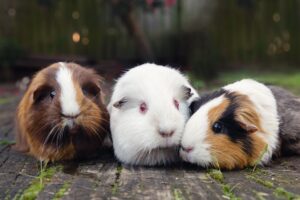
All You Need to Know About Guinea Pigs
Guinea pigs, also known as cavies, are small, sociable rodents that have been cherished as pets for centuries. Originating from
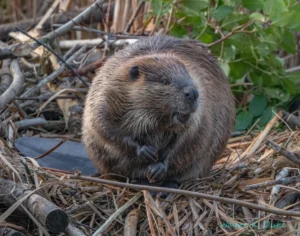
Beaver Facts: Everything You Need to Know
Beavers are fascinating semi-aquatic mammals known for their incredible ability to transform landscapes. With their distinctive skills in dam-building and
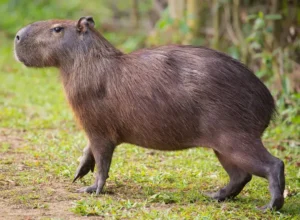
Capybara: The World’s Largest Rodent
The capybara (Hydrochoerus hydrochaeris) holds the title of the world’s largest rodent, a fascinating animal native to South America. Known
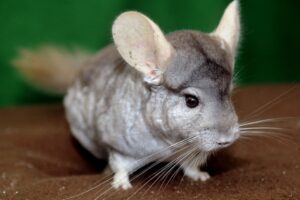
Chinchilla Facts: Everything You Need to Know
Chinchillas are fascinating rodents native to the Andes Mountains in South America. Known for their luxurious fur and energetic personalities,
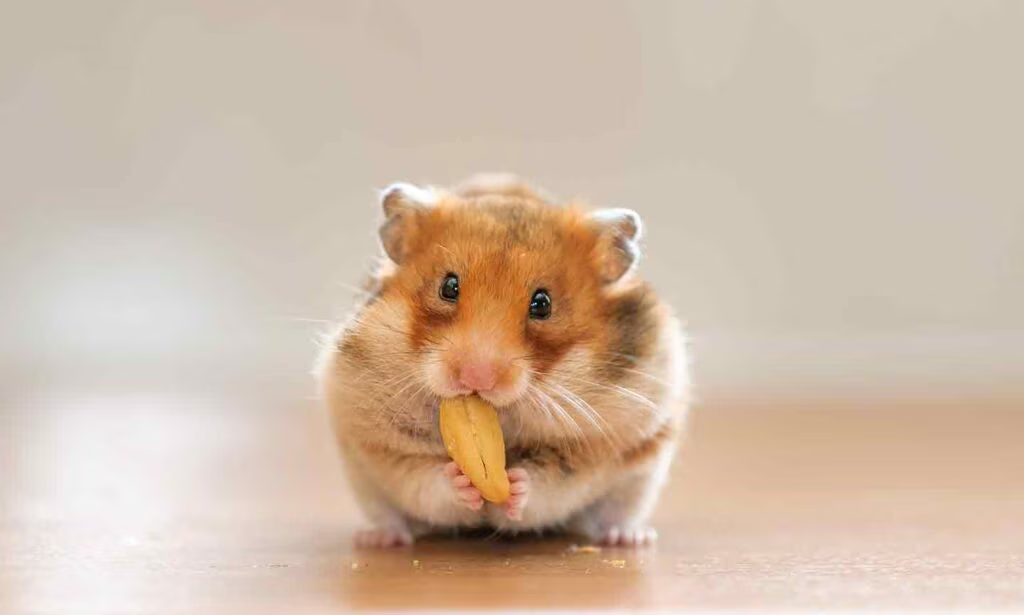
Everything You Need to Know About Hamsters
Hamsters are fascinating small mammals that have captivated the hearts of pet owners around the world. Known for their adorable
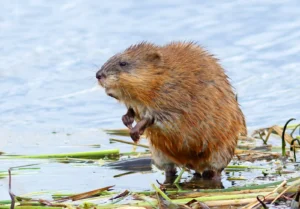
Muskrat: A Guide to This Semi-Aquatic Rodent
Muskrats (Ondatra zibethicus) are fascinating semi-aquatic rodents commonly found in North America. Known for their adaptability and unique behaviors, these
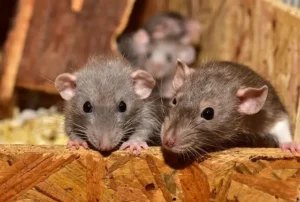
Rats: Facts, Habitat, and Behavior Explained
Rats are one of the most adaptable and widespread mammals in the world. These rodents are found on every continent
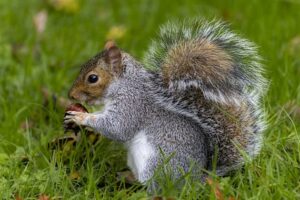
Squirrel Facts: Diet, Habitat, and Unique Traits
Squirrels are among the most recognizable rodents, known for their bushy tails, quick movements, and curious nature. Found across the
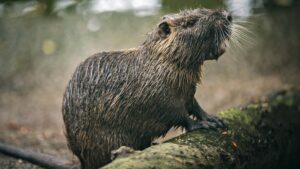
What Is a Nutria? Key Facts About This Unique Species
Nutria, scientifically known as Myocastor coypus, is a large, semi-aquatic rodent that has earned both curiosity and concern across the
